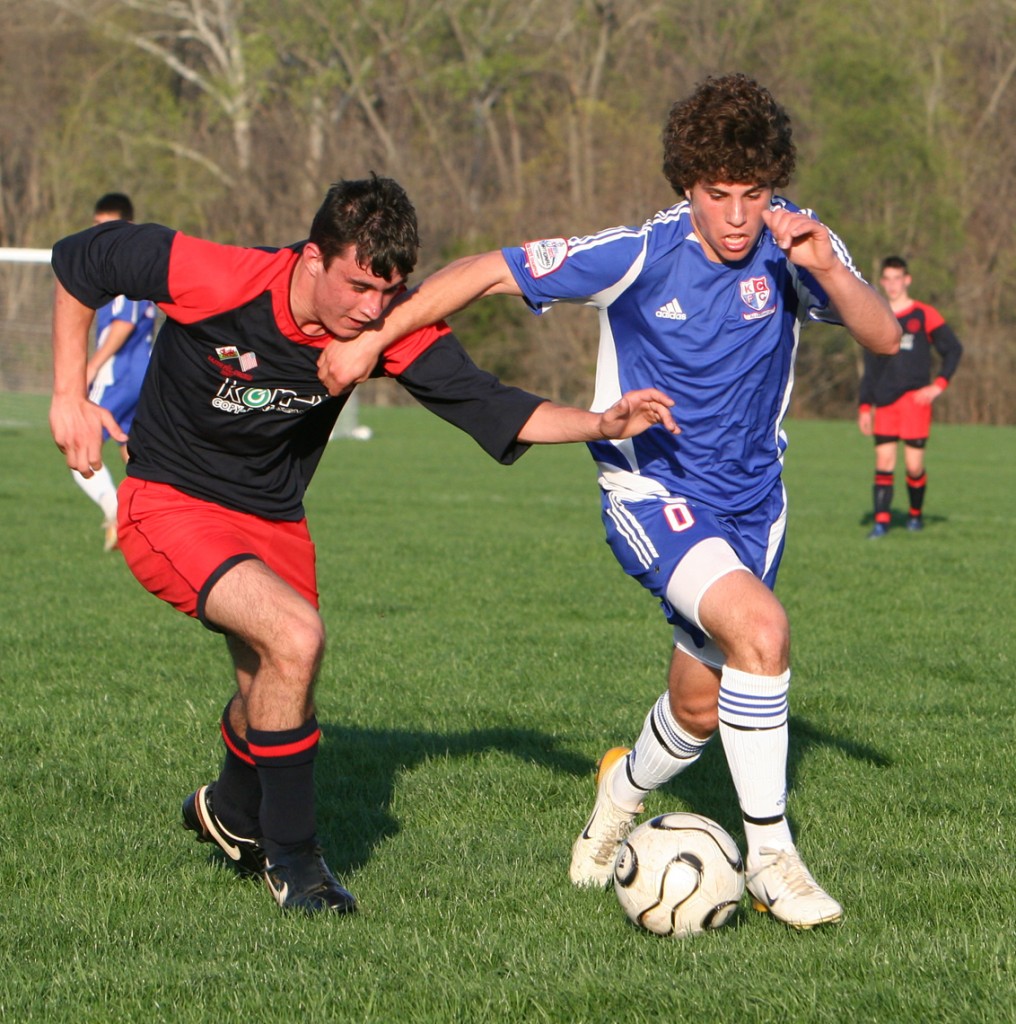In our weekly summer camps at the SoccerFIT Academy we structure each day with a specific focus and then approach each day with an effort to:
- Broaden the players understanding of the athletic aspects required to perform that specific skill
- Integrate the ball into these foundational movements to bridge the gap between athletic movement and athletic skill
- Apply these skills in small-sided games (SSG’s) and fitness activities that allow players to attempt these skills at speed in specific situations.
This approach to training reflects our philosophy at SoccerFIT. For years we have seen players get stronger and faster, but lack the transition to speed on the field (Category 2 Player). We have also seen skilled players that are fast with the ball in technical work, but lack the strength and overall fitness to dominate their game (Category 1 Player). We have designed our approach to training around a system that integrates the strength, speed and fitness with the technical and tactical application thus the acronym F.I.T. or Functionally Integrated Training.
Here is an overview of our Day 1 program:
Day 1: Focus – Confidence with the Ball at Your Feet
• Rhythmic, Quick Feet
• Balanced, Athletic Body Position
• Stationary Ball Control
• Rhythmic Lateral Movement with the Ball
• Attack Based Dribbling
• Reactive, Defensive Movement
• 1v1 Attacking
• Soccer Specific Fitness Interval
Starting inside our facility we use ladders and cones to warm up with a rhythmic confidence, and then quickly transition this rhythm into a focus on quick feet (or how fast they can ‘reposition’ their feet as they move linearly and laterally through a pattern. Our cuing with every timed set starts off with cues of rhythm, “Find your pace,” “Be efficient,” “Glide through the ladder” and then builds aggressively towards speed with cues like, “Get your feet off the ground quicker,” and “How fast can you reset or reposition your feet?”
If we see someone moving faster than they can control, we shift the verbal cuing to reflect an emphasis on balance and body control. We don’t want them moving inefficiently, just fast, rhythmic, on the edge of out of control. We use cues like, “Make sure you are in a position to do any thing at any time.”
We then transition out to the field where we bridge these quick, reactive footwork drills into basic exercises and drills that develop a player’s confidence with the ball at their feet. Sometimes this seems like basic drills that every player should be doing on their own, but as we saw on the field today, five high school players had trouble with simple quick feet drills with the ball (scissors, stepovers, toe taps and roll overs) and thus also had trouble as we progressed into dribbling verses a passive defender and 1v1 attacking drills.
To my surprise, these girls hung around a few minutes after our session was over and began driving balls from about 5-10 yds outside the 18 yard box and hitting the back of the net in the air. Not just once, but EVERY TIME.
This goes to prove my point…Players will work on their strengths, but very rarely do they work on their weakness (no matter how basic). I stood behind them as they kept backing up further and further, hitting balls with power and precision. I looked at one of them and said, “You obviously have no problem finishing…” and without even looking up, she calmly replied, “Nope” as she struck the ball and drove it into the back of the net from about 25 yds out.
At first, in the quick feet drills I was convinced these girls were low level players, but after a few minutes of watching them compete in an accuracy game, I realized that they were just products of a system that puts a heavy emphasis on power and speed over ball control and foot skills.
This is why we train to develop all aspects of the game (physical, technical and emotional). The game takes all kinds and everyone has strengths and weaknesses, but to be a complete player we need to focus on developing their weaknesses, while blending in their strengths for confidence. Tomorrow’s session will have an aspect of creating space and finishing from outside the box. This will blend in some of their weaknesses (dribbling/moves against a defender), but encourage them to perform better so they can show of their strengths (finishing).
We finished off the Day 1 session with some 1v1 drills with dribble through scoring gates and a progressive interval (CAP Soccer Specific Interval Test) that evaluates their aerobic base. By the end of the day we had testing data on general fitness, basic foot skills and confidence in 1v1 situations. Now we can begin to evaluate these players within a training session. They don’t know that they are being tested; they are just having fun and building confidence in a semi-competitive camp with their friends and teammates.
Scott Moody acts as the director of the SoccerFIT Academy in Overland Park, KS and has spent the last 10 years developing a curriculum that bridges the gap between the physical and the technical developmental aspects of soccer. His website, www.soccerfitacademy.com is designed to be an educational site that promotes discussion, offers ideas and breaks down current trends in research and training to offer suggestions as to how it can be applied to youth player development. Scott also is a featured speaker, author and research fellow for numerous organizations, equipment manufacturers and online training magazines.



